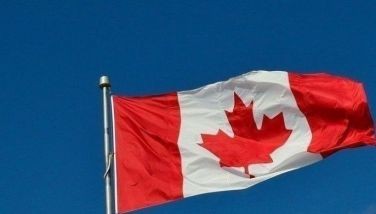KBP urges NTC to adopt Japan technology for digital TV in Phl
MANILA, Philippines - The broadcasting industry has recommended to the National Telecommunications Commission (NTC) the adoption of the Japanese ISDB-T as the digital terrestrial television (DTT) standard for the Philippines.
In a position paper submitted to the NTC-DTT technical working group III, the Kapisanan ng mga Brodkaster ng Pilipinas (KBP) said that any technical advantage offered by the European standard DVB-T2 at this point is outweighed by the benefits to be gained by adopting ISDB-T, with the substantially lower cost of its set-up box resulting in faster take-up by the consumer, and thus, an earlier analog switch-off.
KBP groups all broadcasting networks in the country, including ABS-CBN and TV 5, but excluding NBN and GMA7.
But even government-owned National Broadcasting Network (NBN) is pushing for ISDB-T. GMA, on the other hand, has stopped pushing for the European standard and instead wants the NTC to just be very thorough before making a final choice.
The set-top box is the device that enables the reception of a DTT service-signal by an analog TV set.
“Although DVB-T2 system is technically superior, these advantages have been shown to be irrelevant to the most important stakeholder in the project - the Filipino consumer. The consumer is entitled to clearer and better quality TV experience through an affordable migration to DTT. Consequently, stakeholders will realize the benefits of the digital dividend earlier with ISDB-T as the DTT standard for the Philippines,” KBP said.
GMA Network has recommended to the NTC that in order to come up with a comprehensive and credible review, comparative technical and commercial assessments of both standards must be carried out.
It said actual signal trial of ISDB-T and DVB-T2 must be carried out to verify claims of DVB-T2 over ISDB-T under Philippine conditions. GMA said the commercial evaluation must be expanded to include all relevant cost components of DTT implementation, particularly set-top box (STB) cost and other attendant costs, infrastructure capitalization, operating expenses.
GMA said that in conducting the review, the following criteria should be considered: capacity/transport efficiency, signal robustness/integrity, system flexibility, interoperability with program distribution network, emergency warning system, STB market price, capitalization, and operating expenses.
For its part, NBN in a separate position paper pushed for the ISDB-T Japanese standard, being a flexible technology that willl be able to meet the present requirements and future demands.
NBN said that ISDB-T has rich features. “It supports the emergency applications, multi-media home platform and data broadcasting. The selected DTT standard should support this function... ISDB-T also allows for handheld devices such as cellphones to receive DTT signal with no extra cost; is superior in terms of transmission capability, interactivity, accessibility and possibilities for middleware development (data casting of news items, weather updates, traffic situations, stock market, can be integrated seamlessly with video transmission),” it said.
It added that ISDB-T signal is more robust against impulse noise, and that its set-top boxes are more affordable. “Also, the adoption of ISDB-T will open the opportunity for the small players to avail of financial assistance that the Japanese government is offering in terms of soft loan with very low interest plus technical assistance,” it said.
- Latest
- Trending




























